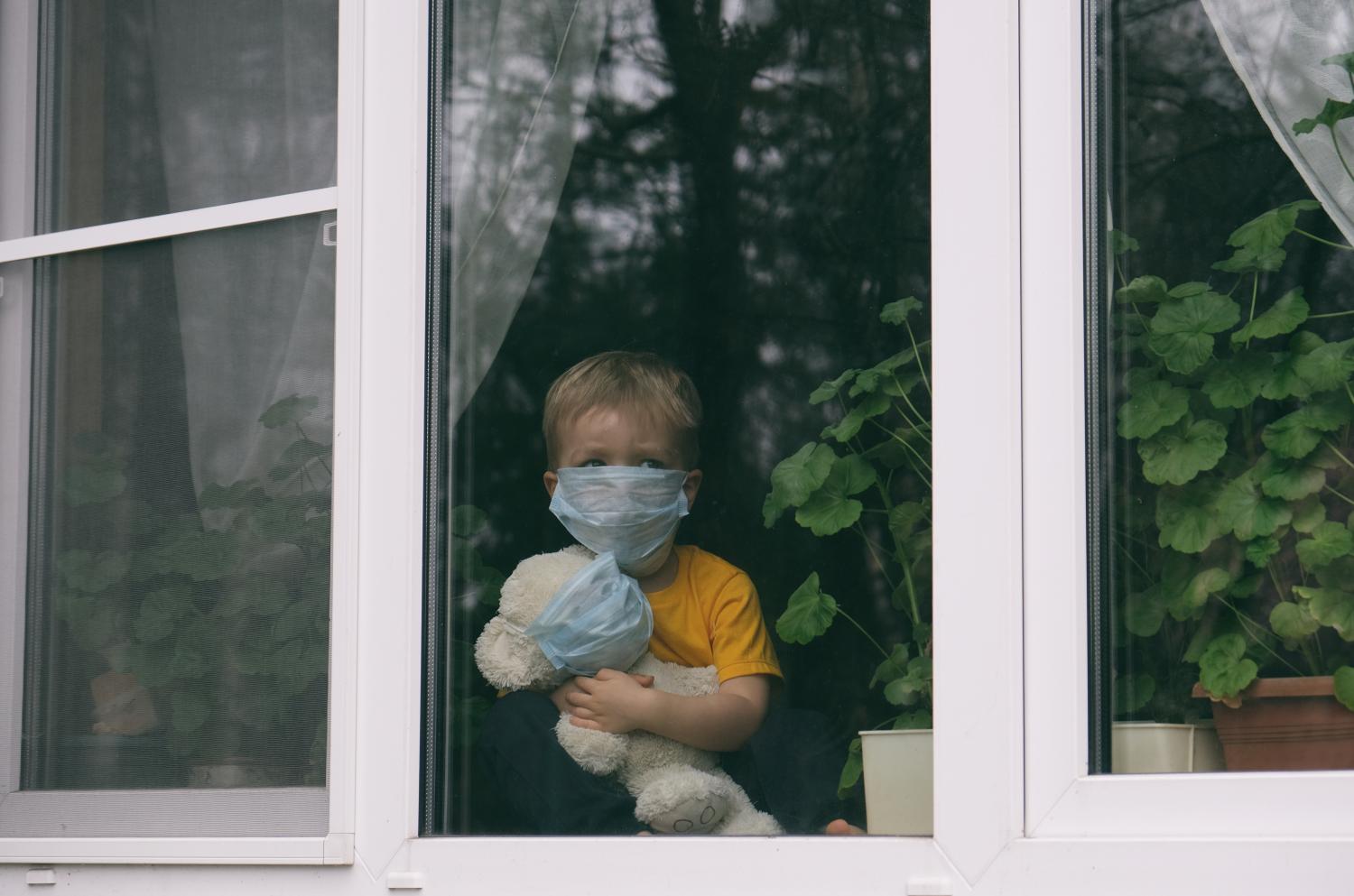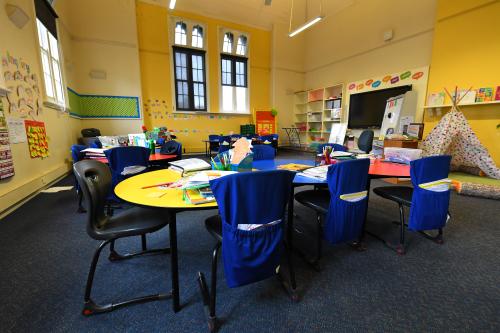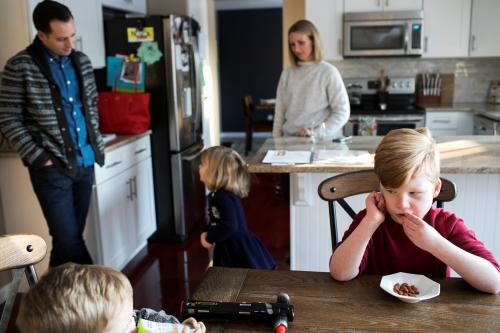The COVID-19 crisis has allowed a revealing look into the shortcomings of the U.S.’s child welfare system. While no institution has proved strong enough to operate effectively and efficiently under the unprecedented circumstances brought on by COVID-19, the crisis has unveiled holes in the child welfare system that call for both immediate and long-term action. COVID-19 has created a perfect storm of factors that will almost certainly lead to a sharp increase in unreported cases of child abuse and neglect, as children are cut off from interactions with professionals and teachers, confined at home with caregivers and relatives, and families are feeling the stress of job loss and economic uncertainty. The nation’s system of detecting abuse and neglect, which is heavily dependent on reports by teachers, doctors, and other professionals, is rendered almost completely powerless in this new situation as in-person and face-to-face interactions between children and professionals are being minimized by the stay-at-home orders issued by most states. At the same time, other vital parts of the child welfare system – home investigations, child-parent visits, mandatory court appearances, home-based parenting programs – are now at a near standstill, making it harder and harder for the system to ensure the safety and well-being of the nearly 3.5 million children they come into contact with each year. While these issues are at the forefront, the crisis provides an opportunity to re-think and restructure child welfare at its core.
The child welfare system has long struggled with a lack of clear program structure and overall philosophy driving the mission. America’s child welfare system is composed of public agencies, private entities, and community-based organizations that come together to ensure both the safety and well-being of children by detecting child abuse or neglect and responding appropriately. While federal laws and funding influence state actions, the United States lacks a clear strategy for addressing child abuse and neglect, and thus the oversight of child protection falls heavily on the states. This in turn causes program structure, service delivery, and overall approach to vary greatly across states. These factors, among many others, contribute to a system without clear guidance, which has long been faced with two conflicting priorities – child protection vs. family preservation. These two priorities are difficult to reconcile since it is imperative to ensure that children are not at imminent physical and emotional risk at the hands of their parents, but at the same time research shows that children do best with their parents and will face negative outcomes if they are removed. While federal policy tends to swing the pendulum towards child safety or family preservation every decade or so, the reconciliation falls into the hands of Child Protective Services (CPS), which are the state or local agencies that are responsible for screening reports of child abuse and neglect and making the decision concerning whether abuse or neglect has actually occurred, and then determining the appropriate response.
The crisis provides an opportunity to re-think and restructure child welfare at its core.
The scope of CPS has grown extensively over the years to the point where now the pressure and expectation has grown so burdensome that the agencies are not able to effectively fulfill their mission. CPS agencies are tasked with preventing, assessing, and resolving child maltreatment with few effective tools and little oversight. The current system ignores the fact that most of the families that come to the attention of CPS are facing issues that contribute to, yet span beyond child maltreatment – poverty, economic uncertainty, homelessness, substance use disorders. When families come to the attention of CPS, a case worker is being asked to ensure the immediate safety of a child, while also remedying the underlying issues that often fall beyond their competence. Coupled with this is the fact that the child welfare system, by design, is reactionary. Since we are usually unable to support families before an instance of child abuse or neglect is suspected or occurs, we are constrained to reacting after children come to the attention of CPS.
These realities have caused the child welfare system to struggle to address the unprecedented challenges posed by the coronavirus pandemic. The isolation of families and other institutions, coupled with the reactionary nature of the system, has deprived CPS agencies of the proper tools to identify, investigate, and support children that may be victims of maltreatment. The COVID-19 crisis may be the push needed for us to examine and re-build a child welfare system that is able to recognize and address the risk factors that lead to child maltreatment and support families, while ensuring the safety of all children. However, we are now trapped in a time-sensitive situation and must evaluate and address the current issues, even while being constrained by the flawed system design and limited resources. The system must quickly find new ways of adapting to the social distancing restrictions and accompanying financial hardships as the current economic and public health crisis threatens to take a heavy toll on our nation’s most vulnerable population of children and youth.
Barriers to reporting child maltreatment
The most immediate effect of the pandemic is the decline in reported cases of child maltreatment, which is expected to continue as children and youth are kept away from their schools, regular doctor check-ups, and organized outdoor activities for the duration of the pandemic. States such as Wisconsin, Oregon, Pennsylvania, and Illinois have already seen reports of child abuse fall by between 20% and 70% in the month of March. In most states, professionals that come in frequent contact with children and youth, such as teachers, pediatricians, daycare providers, lawyers, and police, are mandated reporters, meaning they have the legal duty of making a referral to the CPS hotline when they suspect child abuse or neglect. In 2018, 67.3% of reports (screened-in referrals) that came to the attention of CPS agencies came from professionals in these types of positions, with the most coming from teachers and other education personnel (20.5%). With nearly all states shutting down their schools through April (and many for the remainder of the academic year), as well as the shutdown of daycare facilities, after school programs and activities, and doctors’ offices operating on a limited basis, children are essentially cut off from most, if not all, of the professionals who are responsible for detecting and reporting suspected maltreatment. This could mean that child abuse cases will surface once it’s too late and the child has been admitted to the hospital with serious or life-threatening injuries, as we have seen in one Fort Worth Hospital.
In response to this growing concern, a few states, such as Mississippi and Tennessee, are calling on the general public to be extra diligent during this time, and report suspected child maltreatment to the CPS hotline if it comes to their attention. In these states, and many others, all residents are mandated reporters of child maltreatment, meaning that any person who suspects child abuse or neglect is required to make a referral. While the sentiment is right, in 2018, only 16.6% of child maltreatment reports came from nonprofessionals, i.e. friends, neighbors, and relatives. In addition, unlike the general public, professionals usually receive training related to mandated reporting and are aware of issues related to reporting biases. It has been found that reports made by professional mandated reporters were more likely to be substantiated as accurate than reports from non-mandated reporters or the general public. While the child welfare system needs all the help it can get to ensure the safety and well-being of children and youth, the general public has not been the most frequent or reliable source for child maltreatment reports – which is an issue that could further complicate and overburden the child welfare hotline and system for the duration of the current crisis.
Family isolation and economic uncertainty
Since children are not attending school, participating in sports and clubs, or running around the neighborhood with their friends, they are spending their days indoors, presumably with their parents, caregivers, or relatives. This means that parents or caregivers are suddenly responsible for taking on the roles of teacher, friend, playmate, and coach, round-the-clock, while potentially still trying to complete their own job from home. For some parents, their jobs are deemed essential, and not only are they continuing to show-up for work every day and putting themselves at risk to provide life-saving or necessary services, they are also being hit hard by the added responsibility of child care since daycare centers and school facilities are closed.
When individuals and families encounter economic uncertainty, they experience increased stress, anxiety about the future, anger, and loss of hope.
There is another layer of stress for many Americans, as isolation also comes at a time of wide-spread job loss, economic uncertainty, and general anxiety surrounding employment and earnings. In the last two weeks of March, nearly 10 million Americans lost their jobs and applied for unemployment benefits, with 6.6 million claims coming from the last week of March alone. According to the Federal Reserve Bank of St. Louis, this is just the beginning. Currently, there are approximately 67 million jobs that are at high risk due to COVID-19, and the St. Louis Fed projects that the pandemic will result in a national loss of 47 million jobs in the next quarter. Research has found that economic uncertainty is associated with family stress that can result in adverse child-parent dynamics that may have effects on children’s behavior and mental health. There is also evidence that times of economic downturn are associated with increased child maltreatment. The Great Recession, for example, has been linked to an increased risk for child abuse.
In 2018, of the children who were deemed victims of maltreatment, 92% were abused or neglected by their parent or parents. Parents and individuals that are likely to maltreat their children often have or are exposed at the community level to risk factors that include neighborhood violence, poverty, unemployment, and drug and alcohol abuse. All of these risk factors are interwoven with economic deprivation and uncertainty. When individuals and families encounter economic uncertainty, they experience increased stress, anxiety about the future, anger, and loss of hope. These stressors, coupled with isolation and close proximity, put many families at risk of increased violence and aggression. Already many cities in the U.S. have seen a sharp increase in domestic abuse and violence as a result of the COVID-19 lockdown. There is considerable evidence that domestic abuse and child maltreatment are linked, meaning that if the household experiences one type of family violence, the household is at increased risk of the other. And even if child maltreatment is not occurring in the same household as domestic violence, children are still at risk of adverse behavioral problems related to witnessing domestic violence, which can have detrimental and lasting effects on their development and behavior.
Navigating investigations
While agencies are confronted with the new challenge of keeping children safe despite the loss of their reporting sources, they are also responsible for navigating how, when, and if investigations can occur amidst social distancing and mandatory isolation. In 2018, 3.5 million children received either an investigation or alternative response (which is the CPS response when a child is suspected to be at low or moderate risk of maltreatment) as a result of a CPS report. Of these children, 678,000 were deemed to be victims of child maltreatment, and were either removed from their home or received services to keep them safely in the home. An investigation is crucial for social workers to gather information to make a proper judgement about a child’s safety and living arrangement. In order to properly investigate a report, a social worker usually visits the residence, talks to the parents, and talks to the child and other children in the home as well as others (doctors, teachers, relatives) who have frequent contact with the child. Without thorough investigations, the chances of determining whether abuse has occurred and the level of risk are greatly diminished.
The COVID-19 emergency has caused many states, such as Kentucky and Michigan, to issue guidance that will drastically scale back their in-home investigations to protect their workers and lessen the spread of the virus. Luckily, many agencies have been able to quickly adopt new approaches and embrace virtual means of investigation, such as the efforts being led in Michigan by Executive Director of the Children’s Services Agency, JooYeun Chang. However, it is still necessary for in-home investigations to take place in circumstances that may require immediate response or include serious domestic violence reports. For the home-investigations that are deemed critical, CPS staff must take all precautions necessary to lessen the spread of the virus, while ensuring a quality investigation. That means supplying CPS staff with personal protective equipment (PPE), such as face masks, hand sanitizer, and gloves, so they can remain protected. However, this is easier said than done, as we know that in many cities, such as New York, there are already shortages of PPE for hospital staff and personnel. Unfortunately, this means that CPS workers are putting themselves, their families, and the families they serve at risk. Again, it is little wonder that social workers and CPS staff members in many states have tested positive for COVID-19.
Need for Immediate Response
We’ve laid out a laundry list of issues that CPS agencies have been tackling for the last few months, and while many of the issues must be resolved quickly and will only worsen as we dive deeper and deeper into isolation, the federal and state responses have been mixed. The first federal response bill, the Families First Coronavirus Response Act, which was signed into law on March 18, authorized an increase of 6.2% to the federal medical assistance percentage (FMAP) that determines the split in funding between the federal and state governments in many child welfare related programs This policy signifies an increase in federal matching for Medicaid and for the Foster Care, Prevention, and Permanency program (Title IV-E), which allows states to provide foster care maintenance and adoption assistance payments for children in the care that qualify. The second major federal response package, the CARES Act, which passed on March 30, boosted funding for expanded unemployment benefits, immediate income support for individuals, and increased funding for the Supplemental Nutrition Assistance Program (SNAP) and the Special Supplemental Nutrition Program for Women, Infants, and Children (WIC), which will provide direct relief for families with children who are struggling financially. The bill also allocates $6.3 billion in funding for the Administration for Children and Families, which has distributed the funds primarily to programs that assist low-income families with their energy bills and child care needs. Of the $6.3 billion, only $45 million is being directly appropriated to child welfare services administered by the states. These funds were appropriated to the Stephanie Tubbs Jones Child Welfare Services program (part of Title IV-B of the Social Security Act) to augment the $268 million they received in the current fiscal year. Both the $268 million and the new funds are intended to aid child welfare agencies in carrying out their mission of protecting children from abuse and neglect.
There is no doubt that the child welfare system is being hit hard by the COVID-19 pandemic, but the emergency has also called attention to a system that could benefit from fundamental changes.
What’s Next?
While federal funding designed to help low-income families navigate this Coronavirus crisis is essential, the funding should include more to support child welfare agencies. The $45 million provided for CWS programs in the original legislation is a reasonable start, but additional funds specifically dedicated to helping child welfare agencies boost their technological infrastructure and provide protective equipment to workers who must investigate reports of abuse and family violence should be included in the next package .In addition, while the first package included an increase in the Title IV-E FMAP rate which provided a needed bump to the federal matching rate, another increase in the FMAP would give states the funding and flexibility needed to navigate the crisis and prepare for the future. However, more than increased funding will be needed. Much of the child welfare system relies heavily on community organizations, family members, and teachers to stay connected and provide a safety net for children and families who are at risk. During this time of isolation, it is essential for teachers and other trusted adults to continue to act as a support system – even if only virtually — for children who may be struggling or in a dangerous situation at home.
There is no doubt that the child welfare system is being hit hard by the COVID-19 pandemic, but the emergency has also called attention to a system that could benefit from fundamental changes. In the long-run, it is possible that this crisis could act as a catalyst that causes us to reevaluate child protection at its core – how we support and treat families who are deemed to be at-risk of child abuse and neglect, and how we reconcile child safety and protection with family support and preservation, while recognizing the importance of both. Only time will tell how the burden of isolation and economic hardship on CPS, families, services providers, and community organizations may impact the safety and well-being of at-risk children. A speedy and organized response backed by additional funding, federal and state guidance, and community support, will soften the blow and help move the system into a more promising future.
The Brookings Institution is committed to quality, independence, and impact.
We are supported by a diverse array of funders. In line with our values and policies, each Brookings publication represents the sole views of its author(s).








